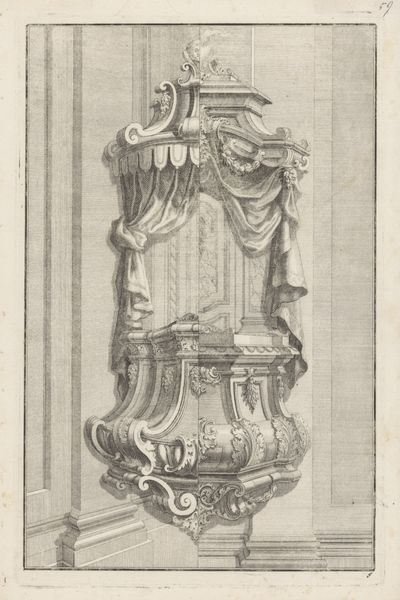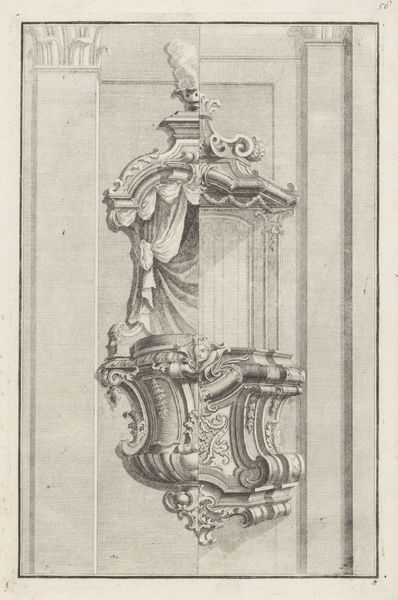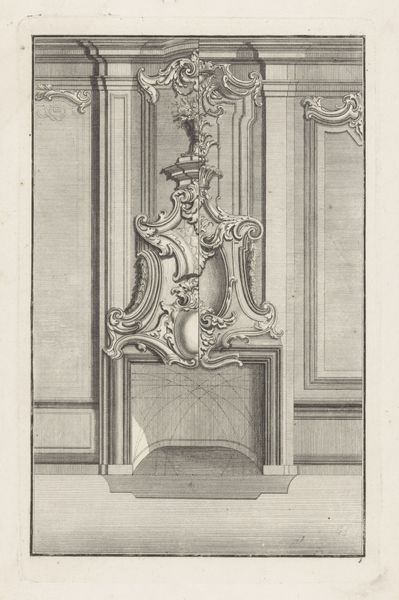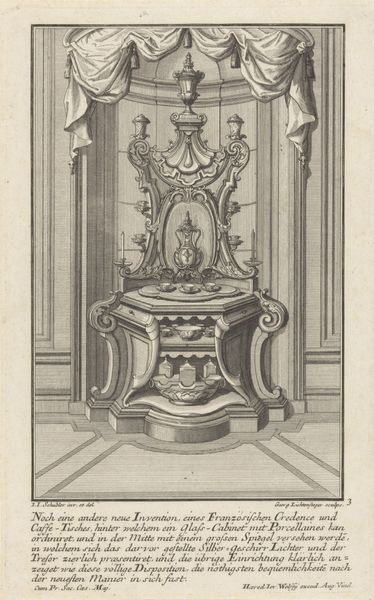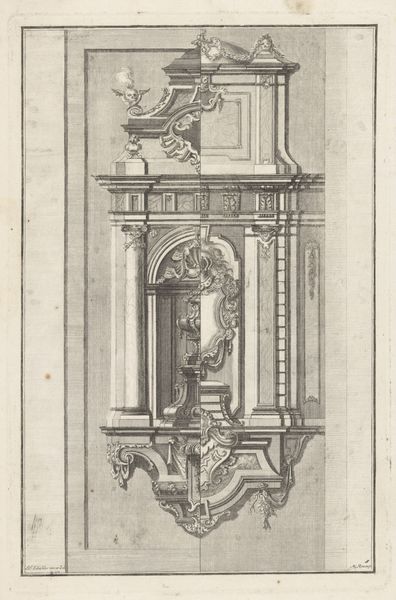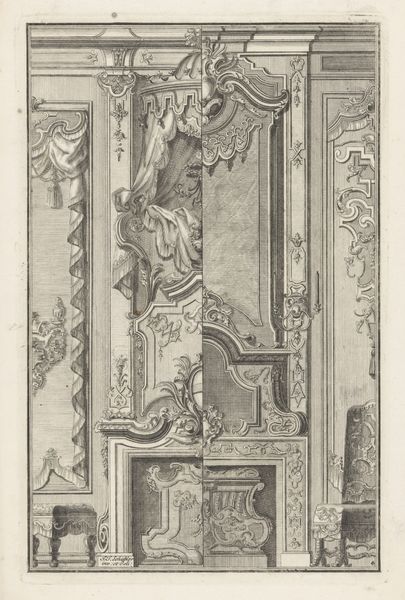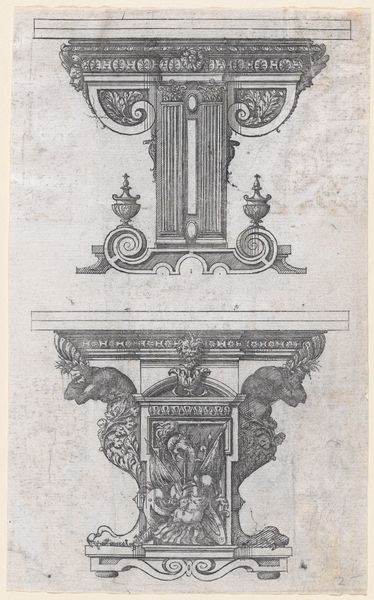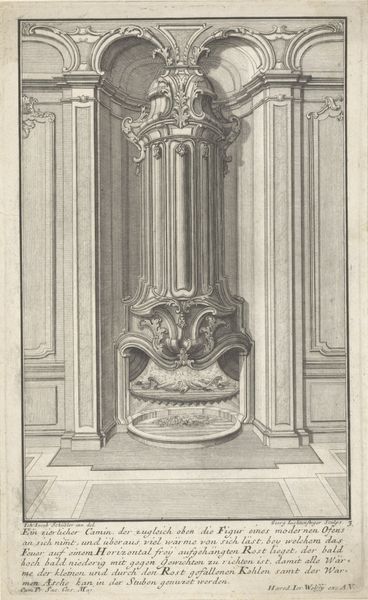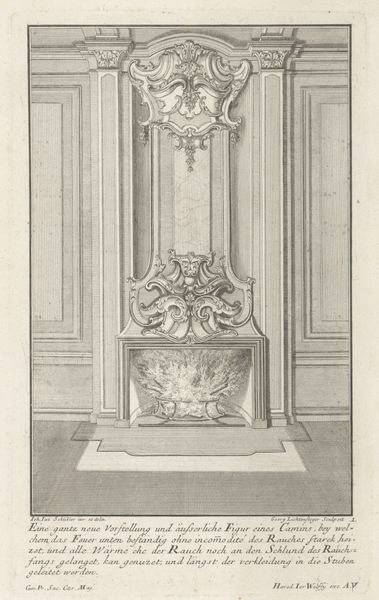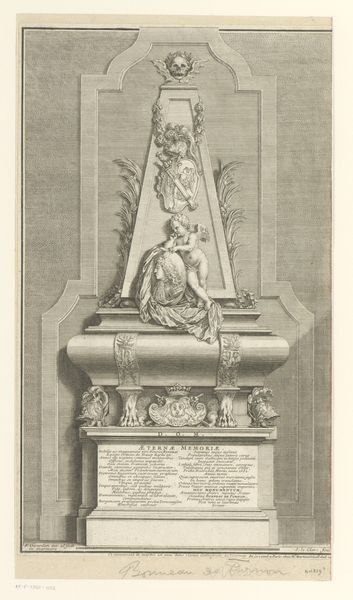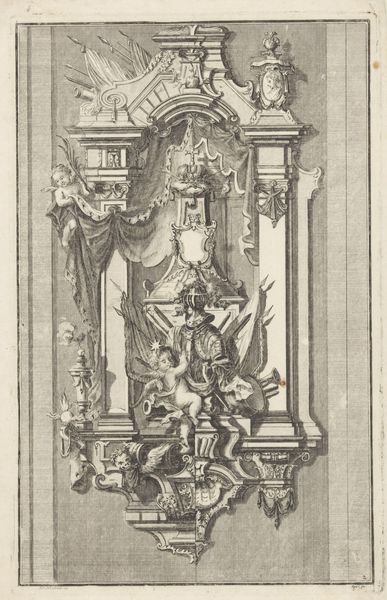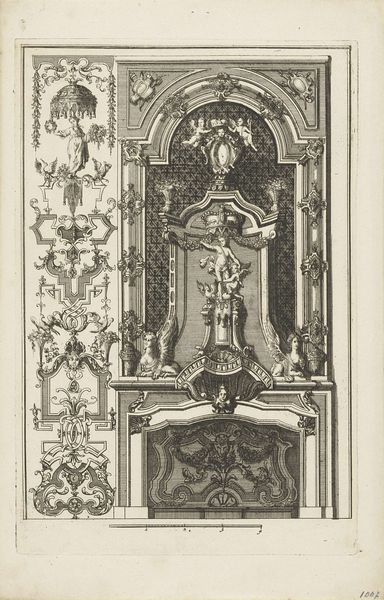
drawing, print, metal, engraving, architecture
#
drawing
#
baroque
# print
#
metal
#
pencil sketch
#
old engraving style
#
pen work
#
engraving
#
architecture
Dimensions: height 273 mm, width 178 mm
Copyright: Rijks Museum: Open Domain
Curator: I am utterly drawn to the ornate drama, those impossibly theatrical draperies. It's as if the very air around this object holds its breath, expectant. Editor: Indeed. What we’re looking at is an engraving entitled “Preekstoel met draperieën,” or "Pulpit with Draperies," made between 1699 and 1726. The artist is Johann Jakob Schübler, and you can find this impressive work in the Rijksmuseum. Curator: Schübler really captures that Baroque intensity! I mean, look at those swirling details! Is this the architect's vision, or his dream? Editor: Well, the Baroque loved a sense of spectacle, especially within religious settings. The pulpit wasn’t just a place to speak, it was a stage. And prints like these, showcasing extravagant designs, played a vital role in disseminating architectural styles and religious power throughout Europe. Imagine the impact on congregations, seeing their faith mirrored in such opulent forms. Curator: I imagine the sermons became more… dramatic, when delivered from such a flamboyant stage? A good preacher would have a field day there. Editor: Absolutely. And beyond its aesthetic or theatrical flair, it represents a specific power dynamic. These elaborate structures often served to physically elevate the clergy, reinforcing their authority in a visual, almost performative way. Curator: So, it's about being seen, being important... that urge feels really fundamental and present today, doesn't it? Even if we’re swapping carved angels for, say, trending hashtags. Editor: The tools evolve, but the motivations, the desires that art reflects… those often stay remarkably constant. And Schübler’s pulpit reminds us that even the most ornate art speaks volumes about power and its performance. Curator: I leave this viewing feeling rather exposed… and humbled. So, Schübler, a final tip of my hat to you, you've had me deep in thought about our own gilded cages of self-importance. Editor: Indeed, a testament to how historical artifacts continue to spark relevant dialogues in our modern context. Thank you for joining us today.
Comments
No comments
Be the first to comment and join the conversation on the ultimate creative platform.
